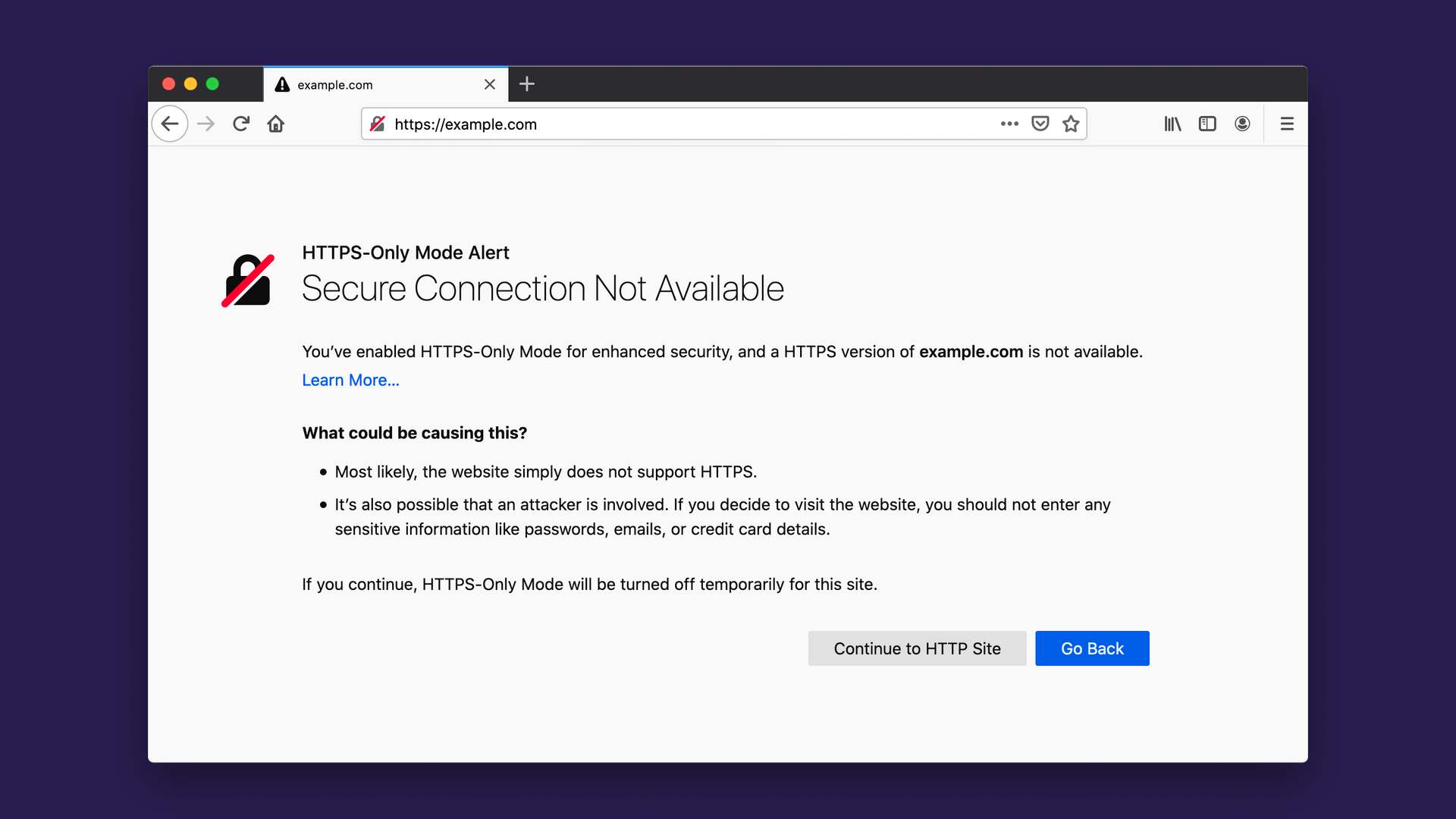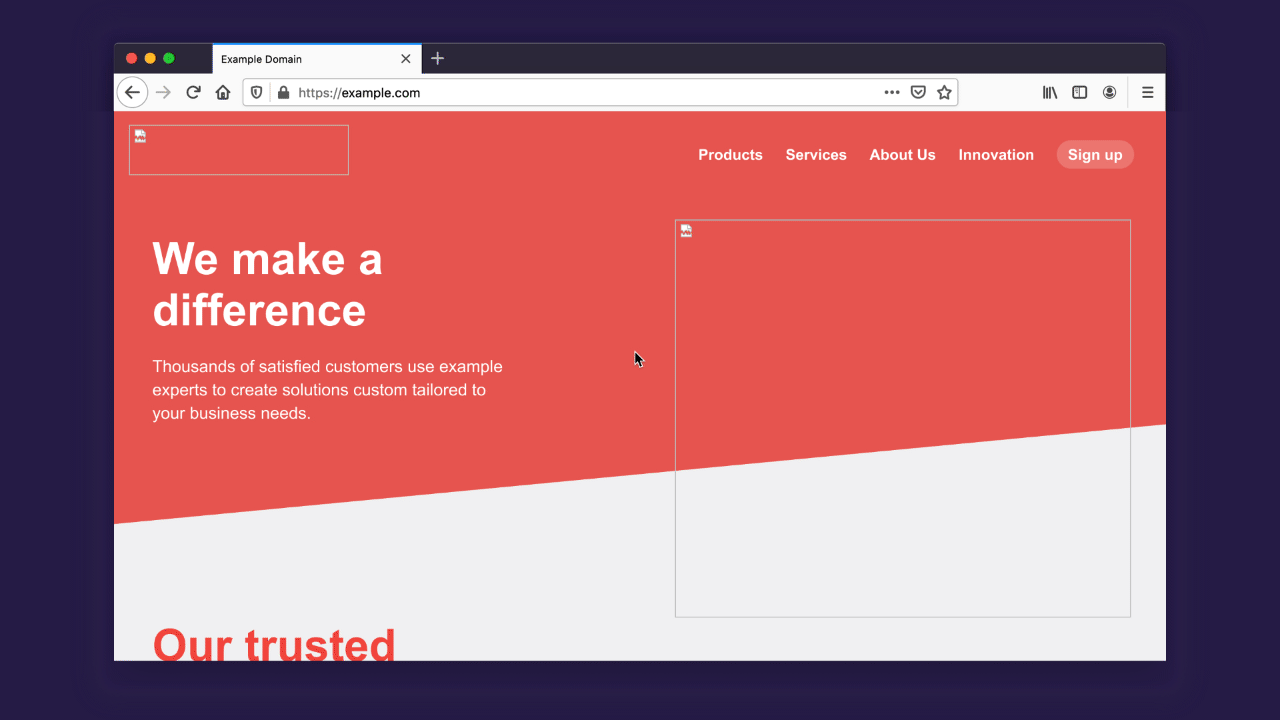Security on the web matters. Whenever you connect to a web page and enter a password, a credit card number, or other sensitive information, you want to be sure that this information is kept secure. Whether you are writing a personal email or reading a page on a medical condition, you don’t want that information leaked to eavesdroppers on the network who have no business prying into your personal communications.
That’s why Mozilla is pleased to introduce HTTPS-Only Mode, a brand-new security feature available in Firefox 83. When you enable HTTPS-Only Mode:
- Firefox attempts to establish fully secure connections to every website, and
- Firefox asks for your permission before connecting to a website that doesn’t support secure connections.
How HTTPS-Only Mode works
The Hypertext Transfer Protocol (HTTP) is a fundamental protocol through which web browsers and websites communicate. However, data transferred by the regular HTTP protocol is unprotected and transferred in cleartext, such that attackers are able to view, steal, or even tamper with the transmitted data. HTTP over TLS (HTTPS) fixes this security shortcoming by creating a secure and encrypted connection between your browser and the website you’re visiting. You know a website is using HTTPS when you see the lock icon in the address bar:
The majority of websites already support HTTPS, and those that don’t are increasingly uncommon. Regrettably, websites often fall back to using the insecure and outdated HTTP protocol. Additionally, the web contains millions of legacy HTTP links that point to insecure versions of websites. When you click on such a link, browsers traditionally connect to the website using the insecure HTTP protocol.
In light of the very high availability of HTTPS, we believe that it is time to let our users choose to always use HTTPS. That’s why we have created HTTPS-Only Mode, which ensures that Firefox doesn’t make any insecure connections without your permission. When you enable HTTPS-Only Mode, Firefox tries to establish a fully secure connection to the website you are visiting.
Whether you click on an HTTP link, or you manually enter an HTTP address, Firefox will use HTTPS instead. Here’s what that upgrade looks like:
How to turn on HTTPS-Only Mode
If you are eager to try this new security enhancing feature, enabling HTTPS-Only Mode is simple:
- Click on Firefox’s menu button and choose “Preferences”.
- Select “Privacy & Security” and scroll down to the section “HTTPS-Only Mode”.
- Choose “Enable HTTPS-Only Mode in all windows”.
Once HTTPS-Only Mode is turned on, you can browse the web as you always do, with confidence that Firefox will upgrade web connections to be secure whenever possible, and keep you safe by default. For the small number of websites that don’t yet support HTTPS, Firefox will display an error message that explains the security risk and asks you whether or not you want to connect to the website using HTTP. Here’s what the error message looks like:
It also can happen, rarely, that a website itself is available over HTTPS but resources within the website, such as images or videos, are not available over HTTPS. Consequently, some web pages may not look right or might malfunction. In that case, you can temporarily disable HTTPS-Only Mode for that site by clicking the lock icon in the address bar:
The future of the web is HTTPS-Only
Once HTTPS becomes even more widely supported by websites than it is today, we expect it will be possible for web browsers to deprecate HTTP connections and require HTTPS for all websites. In summary, HTTPS-Only Mode is the future of web browsing!
Thank You
We are grateful to many Mozillians for making HTTPS-Only Mode possible, including but not limited to the work of Meridel Walkington, Eric Pang, Martin Thomson, Steven Englehardt, Alice Fleischmann, Angela Lazar, Mikal Lewis, Wennie Leung, Frederik Braun, Tom Ritter, June Wilde, Sebastian Streich, Daniel Veditz, Prangya Basu, Dragana Damjanovic, Valentin Gosu, Chris Lonnen, Andrew Overholt, and Selena Deckelmann. We also want to acknowledge the work of our friends at the EFF, who pioneered a similar approach in HTTPS Everywhere’s EASE Mode. It’s a privilege to work with people who are passionate about building the web we want: free, independent and secure.




